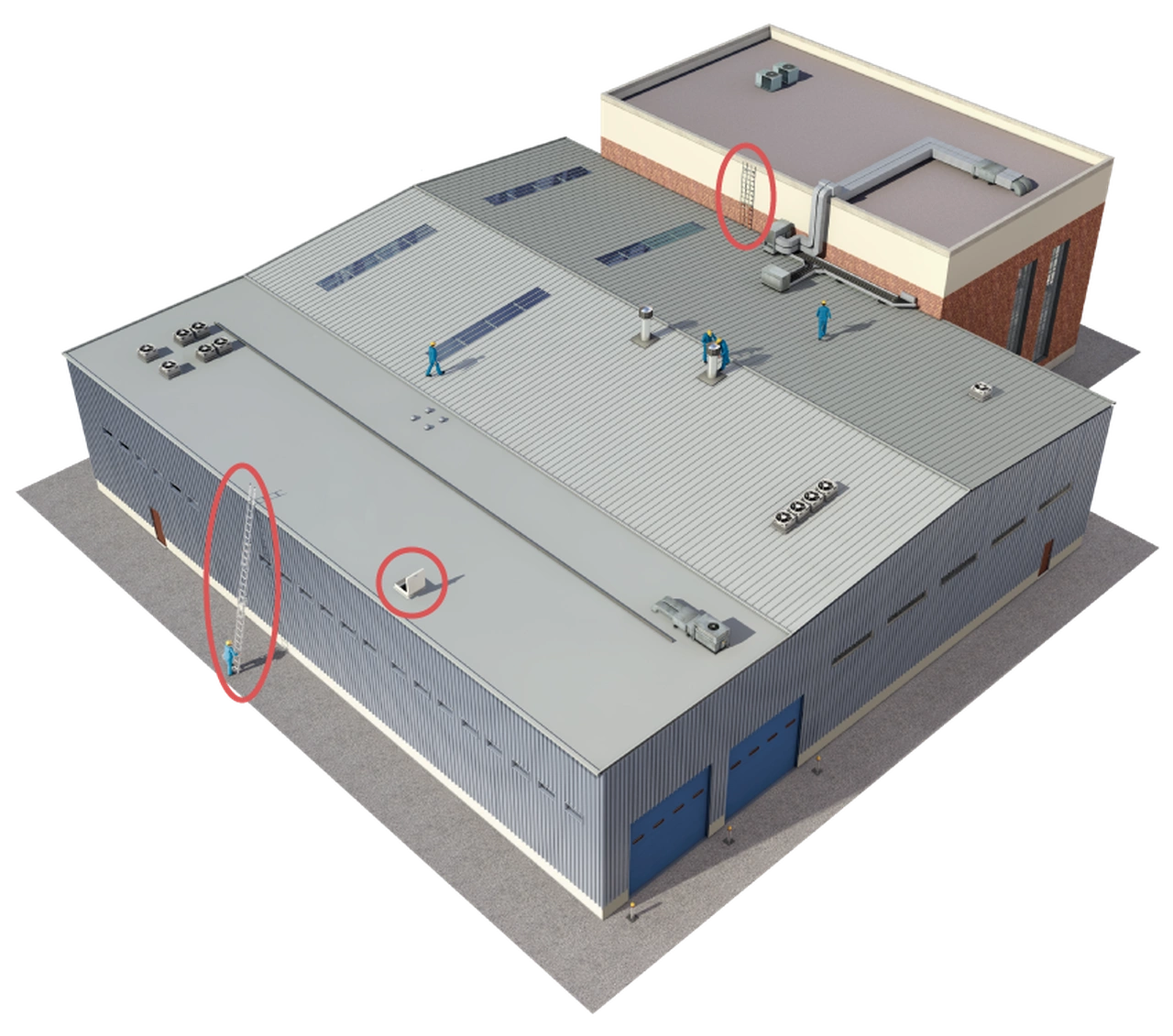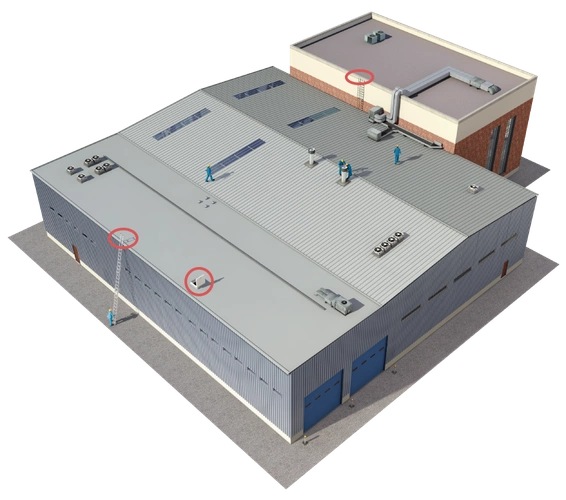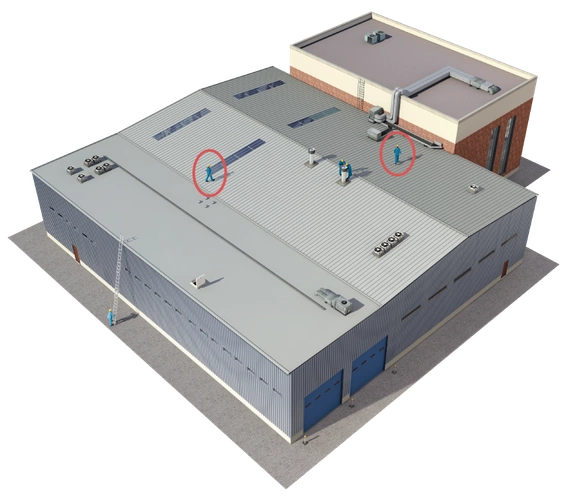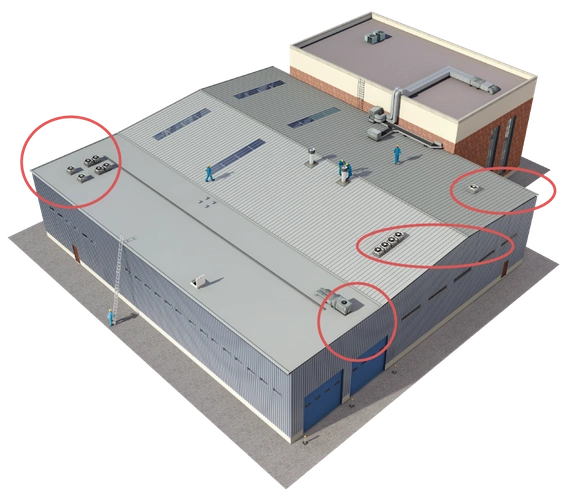Roof Access
Roof access is where the majority of falls occur so having compliant access to a roof is paramount. Carefully assess how different areas of your roof are accessed and highlight any areas of concern.
Compliant solutions include:
- Exterior fixed ladders
- Roof hatches
- Exterior stair systems
- Elevated working platforms
- Ladder support brackets for use with portable ladders


Roof Access Fall Hazards
Hazards at the access or egress point increase the risk of a fall, so it is crucial to examine any access points for potential issues. Look for areas that require difficult movements or have obstacles in the way and flag anything that presents a hazard
Compliant solutions include:
- Guardrails around unprotected edges
- Roof hatch guardrail
- Self-closing gates
Designated Walkway Routes
Clearly defined walkway routes help ensure workers avoid fall hazards and stay on intended pathways only.
If hazards such as unprotected edges, skylights, pits, smoke vents, openings, and elevation changes can be identified, then designated walkway routes and guardrails should be installed to keep workers safe and away from these areas.
Compliant solutions include:
- Aluminum walkway
- Flexible walkway
- Guardrail systems
- Warning line systems


Equipment Near Fall Hazards
Equipment that is located within the danger zone can drastically increase the risk to maintenance workers who will need to access that equipment. Look for equipment that is within 15 ft. of a fall hazard or the unprotected edge on a low slope roof.
Compliant solutions include:
- Guardrails
- Walkways
- Warning lines
- Roof hatch guardrail
- Fall arrest system
Unprotected Edges
Unprotected edges always pose a serious risk. If the previous steps of this program were followed, then the high-risk areas should have already been addressed.
Similarly to equipment near fall hazards, compliant solutions include roof guardrail systems, warning line systems, and fall restraint and fall arrest anchors.

